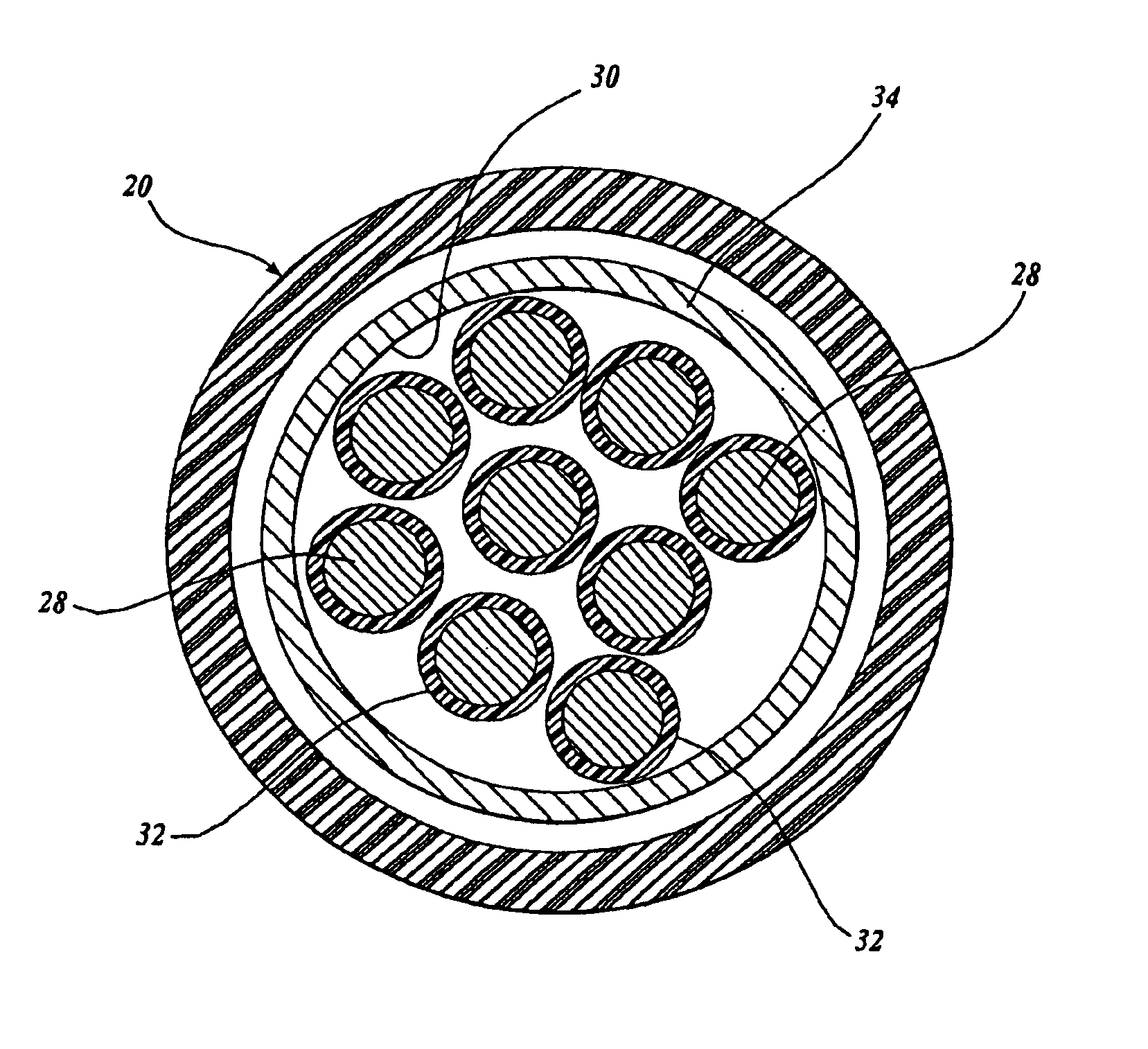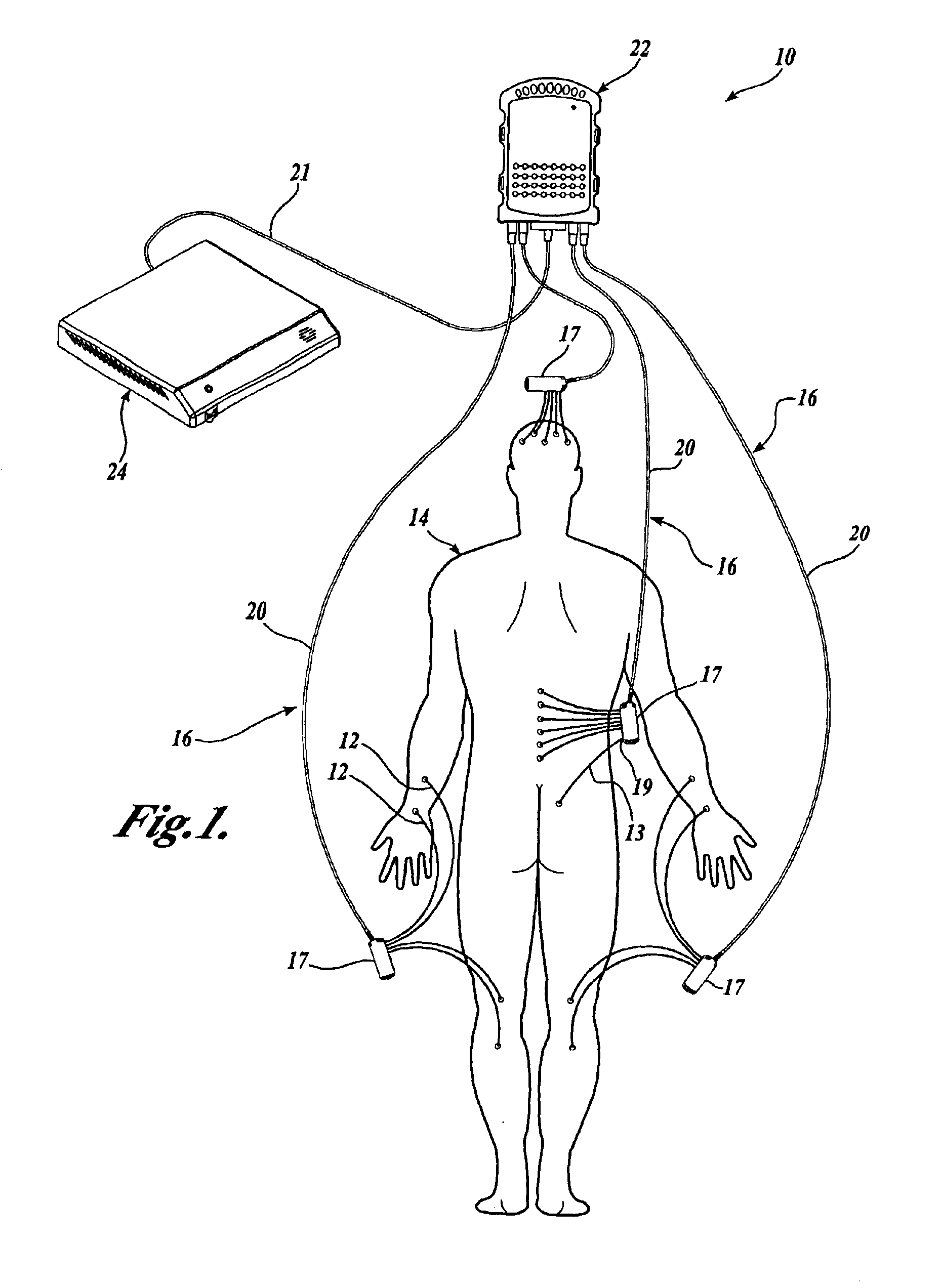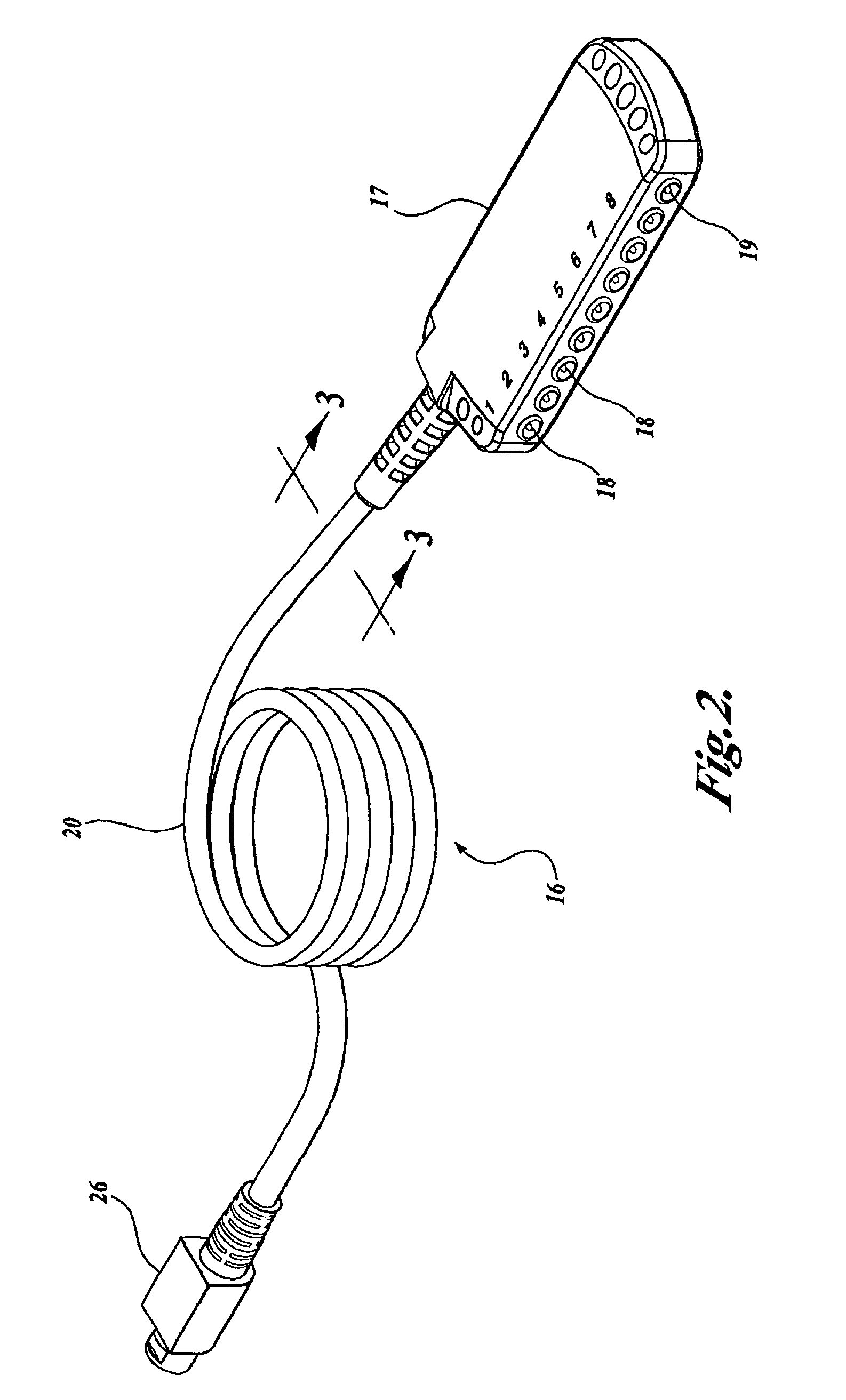System and device for reducing signal interference in patient monitoring systems
- Summary
- Abstract
- Description
- Claims
- Application Information
AI Technical Summary
Benefits of technology
Problems solved by technology
Method used
Image
Examples
Embodiment Construction
The present invention is directed to a system and device for mitigating environmental electrical interference. More specifically, in an embodiment of the present invention, a system and device for mitigating environmental interference associated with neurophysiological monitoring in a surgical environment are provided. One skilled in the art will appreciate that the disclosed embodiments are illustrative in nature and should not be construed as limiting.
FIG. 1 is a diagram illustrative of a representative embodiment of a neurophysiological patient monitoring system 10 formed in accordance with the present invention. As illustrated in FIG. 1, one or more pairs of electrodes 12 may be connected to a patient 14. The location and placement of the electrodes 12 will coincide with the particular type of monitoring desired, such as neurological monitoring. For example, the electrodes 12 may be connected to the patient 14 to monitor brain wave activity, electric muscle activity, electric he...
PUM
| Property | Measurement | Unit |
|---|---|---|
| Electrical conductivity | aaaaa | aaaaa |
| Interference | aaaaa | aaaaa |
| Electrical conductor | aaaaa | aaaaa |
Abstract
Description
Claims
Application Information
 Login to View More
Login to View More - R&D
- Intellectual Property
- Life Sciences
- Materials
- Tech Scout
- Unparalleled Data Quality
- Higher Quality Content
- 60% Fewer Hallucinations
Browse by: Latest US Patents, China's latest patents, Technical Efficacy Thesaurus, Application Domain, Technology Topic, Popular Technical Reports.
© 2025 PatSnap. All rights reserved.Legal|Privacy policy|Modern Slavery Act Transparency Statement|Sitemap|About US| Contact US: help@patsnap.com



